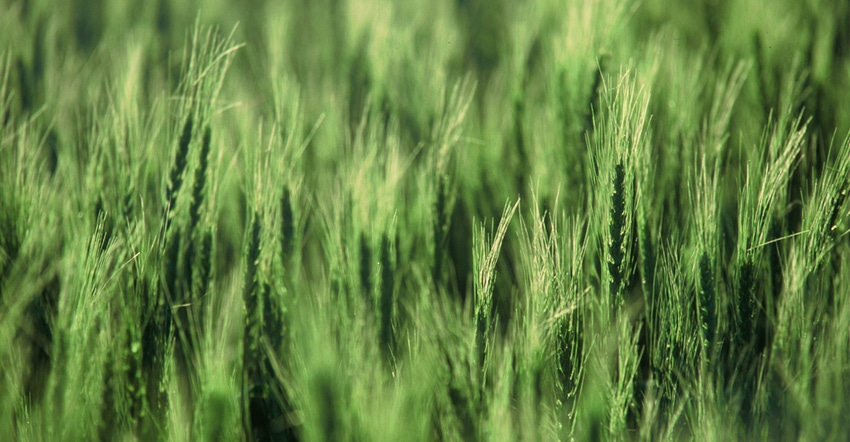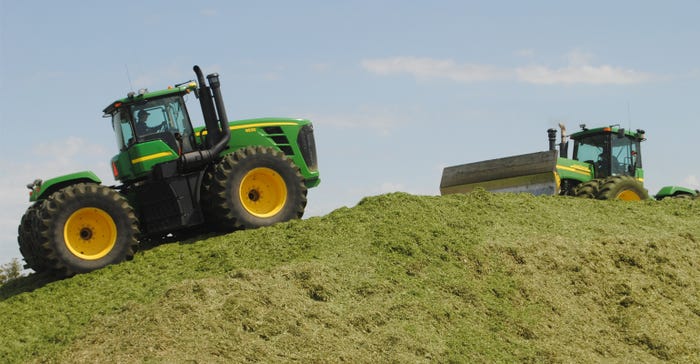
Small grains may offer livestock producers a valuable feedstuffs resource.
“Small grains have been used as a forage source for many, many years. More recently, one of the things that has happened is that they’ve taken small grains and given them a new term as cover crops,” said Daren Redfearn, professor of range and forages sciences in the University of Nebraska Department of Agronomy and Horticulture.
Speaking at the UNL Silage for Beef Cattle Conference in March, Redfearn said cattlemen have various reasons to consider small grains as sources of silage because they should be easy to establish, can grow rapidly, should be productive, have potential for high quality and can be economical for livestock producers.
While small grains provide quality forages, Redfearn advised that producers be aware that production can vary, not only from species to species, but also within specific varieties of particular small grains.
He suggested that planting date may be the most critical factor when looking at small grains and their use as a forage. “Anything planted before Oct. 1, we can expect fall growth for forages,” he said, while with small grains planted after that date, “we don’t really expect any fall growth, but we do have expectations that we can have a significant amount of spring growth.”
Producers have had luck with mixtures of small grains such as a binary, which is a mix of two cultivars, for example, mixing a winter type with a spring type (cereal rye with oats, or cereal rye with spring triticale). Other possible planting mixes Redfearn pointed out are simple and complex. Contrary to its name, simple blends combine four to five different types.
“There’s also gaining interest in looking at complex mixtures, which are a combination of eight or 10 different types of forages,” he said. “While there are some producers who have had success with this, we don’t really have a good science base of what to expect from these mixtures.”
While small-grain forages often are grouped under a single umbrella, Redfearn advises that producers remember there are distinct differences, most of which center on maturities. “We also need to realize what may work in one part of the country or state may not work as well in another region,” he said.
Lastly, Redfearn advised producers not to get hung up on production costs that can run $85 to $150 per acre for small grains for forages for grazing, hay or silage. “Think about how we’re going to manage these to maximize or optimize the forage production,” he said. “That optimization to forage production is going to further reduce that cost of forage production per acre.”
Silage
Just as small grains differ in forage production, they also vary in which species work best for silage, as well as when they should be harvested.
Mary Drewnoski, UNL associate professor and beef systems specialist, said when comparing winter-hardy small grains (cereal rye, triticale and wheat), “We don’t see huge differences in terms of yield or quality if we harvest them at the same relative maturity stage. What we did see was some differences in terms of when they hit those stages.”
There are differences among varieties within species, such as Rymin rye that hit stages about the same time as the triticale did, “but if we plant a southern rye, it’ll be a week earlier at each stage than triticale or wheat,” she said.

PACKING IT: Putting up rye silage or any small grain requires management, as far as the timing of harvest, so the resulting feed will meet the nutritional needs of the livestock being fed.
Dry matter yield of the three species increases steadily until soft dough stage. “That’s like mid-June, and at that point, we did see triticale really kind of pull away from the rye,” Drewnoski said. While triticale and rye did increase dry matter from milk stage to soft dough, the Arapahoe wheat actually lost dry matter between the two stages “because we lost some leaves, so we had some senescence or some death of the leaves. They dried up, they fell off, and so we didn’t actually capture that yield.”
Timing is key when producers look at harvesting small grains for the best nutrient content. Harvesting at earlier stages of growth provides the best energy levels and crude protein, as a percent of dry matter. “As you’d expect them to have much higher energy, they’re more digestible because we have less plant cell wall and as we go into milk stage, we kind of hit our bottom,” Drewnoski said, suggesting that producers keep in mind the animals that will be eating the end result.
“You may want to go earlier to get higher quality or go later to get more yield,” she said. “So in this case, the one thing that really does stick out is that milk is probably the scenario that’s the least desirable because it actually has the lowest TDN [total digestible nutrients] and if you wait a little bit longer, usually another seven days or so to soft dough, you’ll actually gain more yield and more energy content,” she said.
In that scenario, however, crude protein levels continue on a steady decline from boot stage through to soft dough. “Boot stage actually had protein contents that were very similar to alfalfa, so some producers feeding it to beef cows or growing calves will shoot for boot, give up dry matter yield to use it as a protein supplement,” Drewnoski said.
Full presentations from the conference may be viewed at youtube.com.
About the Author(s)
You May Also Like






